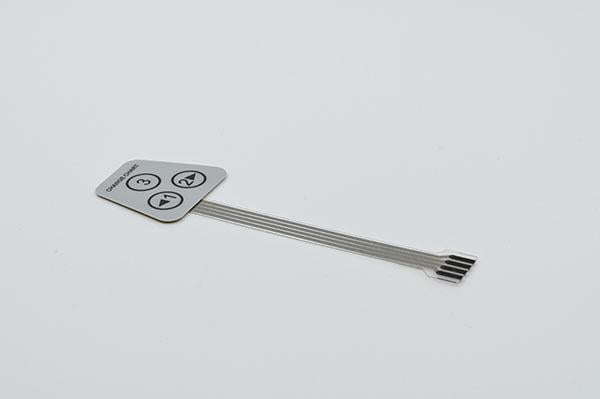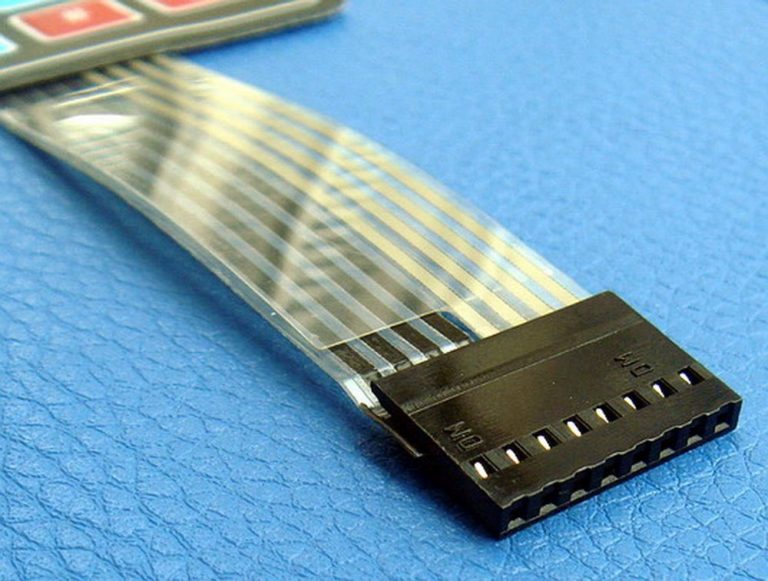All Concerning Membrane Layer Switch Over: Comprehending Its Style and Performance
When you assume regarding the control user interfaces in contemporary devices, membrane switches typically come to mind. These parts are a lot more than simply buttons; they mix design and performance seamlessly. Understanding just how they function and what makes them efficient can transform your viewpoint on day-to-day electronic devices. There are subtleties to their layout and efficiency that you could not be mindful of. Allow's discover what collections membrane switches over in addition to other control systems.
What Are Membrane Switches?

Their seamless nature makes them easy to tidy and resistant to dust and dampness, a vital function in several atmospheres. Membrane layer switches can also be tailored regarding form, size, and graphics, allowing makers to develop special user interfaces customized to certain products. Plus, they're light-weight and thin, which assists in reducing the total bulk of devices. Overall, membrane layer buttons play a considerable role in enhancing individual experience across a wide array of applications.
Just How Membrane Changes Job
When you press a trick on a membrane button, it turns on a simple yet efficient mechanism. membrane switch manufacturer. The top layer, often made of versatile product, presses down onto a conductive layer beneath it.
You'll see that the responsive responses differs based on the button layout, using either a soft click or a more pronounced reaction. When you release the secret, the membrane returns to its original setting, reopening the circuit and stopping the signal. This procedure happens nearly instantaneously, making certain a receptive individual experience.
Membrane buttons are preferred because of their toughness and resistance to dust and dampness, making them suitable for various applications, from household appliances to medical devices. Comprehending this procedure assists you value their widespread use.
Trick Elements of Membrane Buttons
Understanding the crucial elements of membrane buttons is essential for realizing their capability and style. The protective layer shields versus environmental factors and use, extending the button's lifespan. By understanding these elements, you'll get insight into exactly how membrane layer switches operate and their relevance in numerous applications.
Products Used in Membrane Layer Switch Design
The performance and resilience of membrane layer changes greatly rely on the products utilized in their style. You usually encounter polyester and polycarbonate as primary substrates due to their superb stamina and versatility. These products resist scratches and chemicals, making them optimal for requiring environments.
The conductive layers usually use silver or carbon, selected for their integrity and conductivity. membrane switch manufacturer. Silver offers remarkable performance, while carbon is an economical alternative. For the overlay, you may take into consideration a matte or glossy coating, depending on your aesthetic requirements and customer experience
Make particular to choose adhesives that stand up to environmental elements like temperature and moisture. Choosing the best products will certainly assure your membrane layer button stands the test of time.
Design Considerations for Membrane Switches
While designing membrane buttons, it's vital to take right into account numerous factors that affect their functionality and customer experience. Begin by concentrating on the format and button dimension; make particular they're instinctive and simple to navigate. Consider the tactile responses you desire to supply-- will individuals need a recognizable click or a softer touch? Additionally, consider the materials you'll utilize, as they'll impact longevity and visual appeals.
Verify your style suits ecological aspects, like moisture or temperature level variants, which can affect performance. By very carefully taking into consideration these aspects, you'll develop a membrane switch that boosts use and contentment.
Applications of Membrane Switches
Membrane buttons are functional parts located in different applications, from industrial devices to customer electronic devices. You'll see their impact in devices that need durable interfaces and in devices that take advantage of smooth designs. Comprehending these applications helps you value the functionality and practicality of membrane layer buttons in day-to-day modern technology.
Industrial Equipment Usage
When you're looking to enhance the capability of commercial tools, membrane buttons offer a reputable remedy next page that integrates resilience with straightforward style. These switches are best for rough environments, giving resistance to dirt, dampness, and chemicals. Welcome membrane buttons to enhance your procedures and improve total efficiency.
Consumer Electronics Combination
In the domain name of customer electronic devices, membrane switches play a vital function in improving individual communication from this source and device performance. You'll locate them in devices like microwaves, remotes, and video gaming consoles, providing a seamless way to communicate with technology. Their sleek design enables easy integration right into numerous items, making controls user-friendly and easy to use. With their ability to incorporate graphics and backlighting, you can take pleasure in a contemporary visual that complements the device's general appearance. Membrane switches also ensure longevity and resistance to dirt and moisture, expanding the lifespan of your electronic devices. By selecting membrane buttons, you improve not just the functionality yet additionally the style of your tools, making day-to-day communications smooth and enjoyable.
Benefits and Disadvantages of Membrane Buttons
While membrane layer switches supply an array of advantages, they also come with some drawbacks that you ought to take into consideration. One considerable benefit is their compact layout, making them perfect for space-constrained applications.

Nonetheless, there are drawbacks. Membrane switches can have a much shorter lifespan compared to mechanical switches, especially under hefty use. They can likewise be much less tactile, which might affect user comments throughout procedure. Moreover, if harmed, repairing them can be tough and often calls for complete substitute. Inevitably, their level of sensitivity to extreme temperatures and ecological problems may limit their performance in specific setups. Stabilizing these benefits and drawbacks will aid you determine if membrane buttons are the ideal fit for your project.
Often Asked Concerns
The Length Of Time Do Membrane Switches Over Normally Last?
Membrane switches generally last between 5 to 10 years, relying on use and ecological problems. You'll desire to evaluate variables like wear, direct exposure to dampness, and temperature level changes to gauge their longevity successfully.
Can Membrane Layer Switches Be Customized for Particular Designs?
Yes, you can personalize membrane layer switches to fit certain styles (membrane switch manufacturer). You'll have the freedom official site to pick colors, forms, and layouts that match your project's demands, guaranteeing they mix seamlessly with your total aesthetic
What Is the Price Array for Membrane Switch Over Production?
The price array for membrane switch production generally falls between $1 and $10 each, depending on aspects like design complexity, quantity, and products. You can obtain quotes from suppliers to find the ideal alternative.

Are Membrane Layer Changes Water-proof or Immune?
Membrane layer switches can be made to be water resistant or resistant, depending on products made use of and building and construction methods. If you need them for wet settings, assure you specify those requirements throughout the style process.
Just How Do Membrane Layer Switches Over Compare to Typical Buttons?
Membrane switches are generally thinner and more flexible than standard switches, offering a sleek layout. They're typically less complicated to cleanse and incorporate, but could not provide the tactile comments you're made use of to with mechanical options.
Final thought
